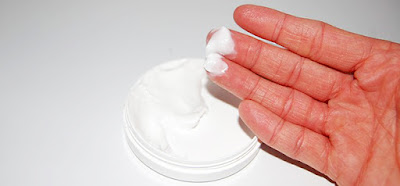The mythical blue box of Nivea hide her game? Everyone knows the famous moisturizing cream with such a recognizable fragrance; rare are the bathrooms that have never seen the shadow of a pot of universal cream "snow-white"
(it is this expression, in Latin niveus, that the name of the brand comes) on the one of the shelves. The timeless moisturizing cream has almost kept the same recipe since its invention in Germany in 1911.
Presented as natural and even eco-friendly, the Beiersdorf laboratories have gone so far as to focus their communication on the green side of their cream: "Paraben-free, without preservatives, 100% love". That's right, but beside that? Is there really only love in the little blue box?
The ingredients of Nivea cream
The law requires manufacturers to list all the ingredients that make up cosmetic products in a sufficiently visible manner in descending order of concentration. This is the I.N.C.I list, International Nomenclature of Cosmetic Ingredients, which should mention the names of ingredients in English for chemical substances and in Latin for natural products.
Here is what can be read on the box Nivea Cream (4):
Ingredients - Aqua, Parrafinum Liquidum, Cera Microcrystalline, Glycerin, Lanolin Alcohol (Eucerit®), Paraffin, Panthenol, Decyl Oleate, Octyldodecanol, Aluminum Stearates, Citric Acid, Magnesium Sulfate, Magnesium Stearate, Fragrance, Limonene, Geraniol, Hydroxycitronellal, Linalool, Citronellol, Benzyl Benzoate, Cinnamyl Alcohol.
Oil to pamper your skin
First, we find the water, Aqua: so far, so good! Water is usually the main ingredient of any cosmetic.
The problem is that it spoils the second ingredient (which is the one with the highest concentration after water): Parrafinum Liquidum.
Paraffin oil is a mixture of hydrocarbons that covers the skin with a thin film that prevents water from evaporating. It is for this reason that Parrafinum Liquidum is found in many moisturizing products.
Then, in the third ingredient we find Cera Microcristallina or microcrystalline wax which is also a petrochemical derivative.
In 6th place, again oil: Paraffin.
Paraffins, if they are not ideal for the skin because they will tend to prevent it from breathing, are especially not very sweet for the environment, since the oil industry.
Many synthetic ingredients (5)
If there is no trace of parabens in a pot of Nivea, it does not mean that all other ingredients will be natural and / or plant origin.
A number of ingredients can actually be of natural origin (Panthenol for example) but others used in the composition of Nivea cream are indeed synthetic, with some of them an allergenic potential:
- Hydroxycitronellal is one of the allergen components subject to restrictions of use
- Citronellol is an ingredient, sometimes used in anti-insect products or perfumes, which poses a slight problem because it can potentially cause contact allergies in sensitive people,
- Benzyl Benzoate is an odoriferous solvent of vegetable or synthetic origin that enters into the composition of perfumes. Benzyl benzoate is also naturally present in the essential oils of jasmine and ylang-ylang.
- Cinnamyl Alcohol. : cinnamic alcohol is also part of the allergen components subject to restrictions of use
The word of the tester: this cream Nivea is certainly pleasant to use for many people but beyond the fact that it is effective (the skin is soft and hydrated) what really surprises is the significant presence of allergens in its composition . We are very far from an organic cream and it is very surprising (even shocking?) For a cream that prides itself on being "adapted to sensitive skin", but which can be badly tolerated by some of them! A cream that is not made for those who require natural cosmetics, and that is not intended for everyone either.
Make your homemade universal moisturizer!
What's better than homemade to be sure to avoid any unwanted ingredients to take care of yourself?
Ingredients for about 100 ml of cream to keep in a jar or a pump bottle:
- 4 tablespoons of apricot kernel oil
- 1 CS slice of emulsifying wax glitter with olive base
- 6 tablespoons of hydrolat to choose (see the article: aromatic hydrolates to take care of your skin)
- 1 tablespoon aloe vera gel
- 10 drops of HE of true lavender or niaouli
- 5 drops of EO of petitgrain bigarade or grapefruit
In a bain-marie or saucepan, melt the apricot kernel oil and the flakes on very low heat. In another bain-marie container too, heat the water and aloe vera.
Gradually add the aqueous phase (the 2nd mixture) to the melted fat by mixing with a small whisk, until the cream becomes thick.
Once the emulsion is taken, add the 15 drops of HE for storage and perfume.
Recipe by Julien Kaibeck, from his book Adopt the Cosmetic Slow.
















0 comments:
Post a Comment